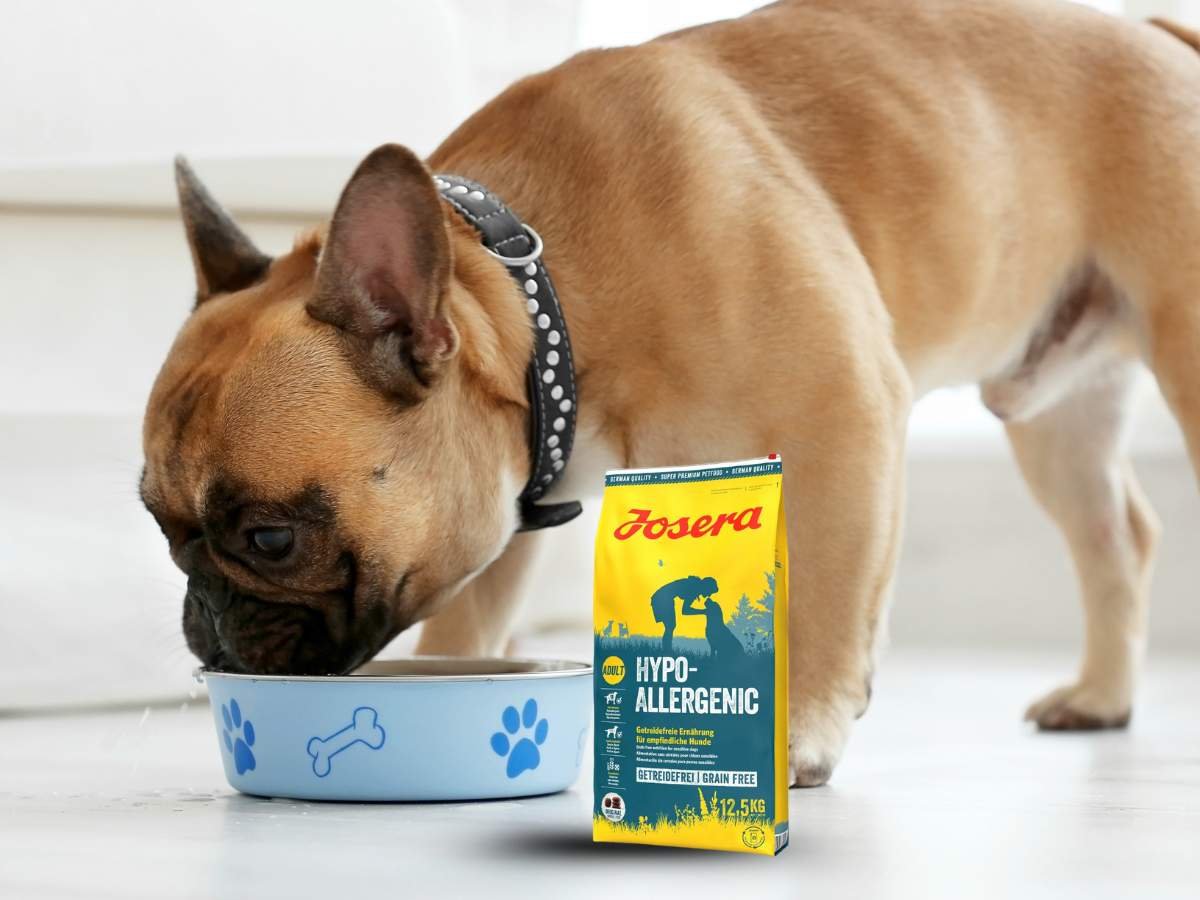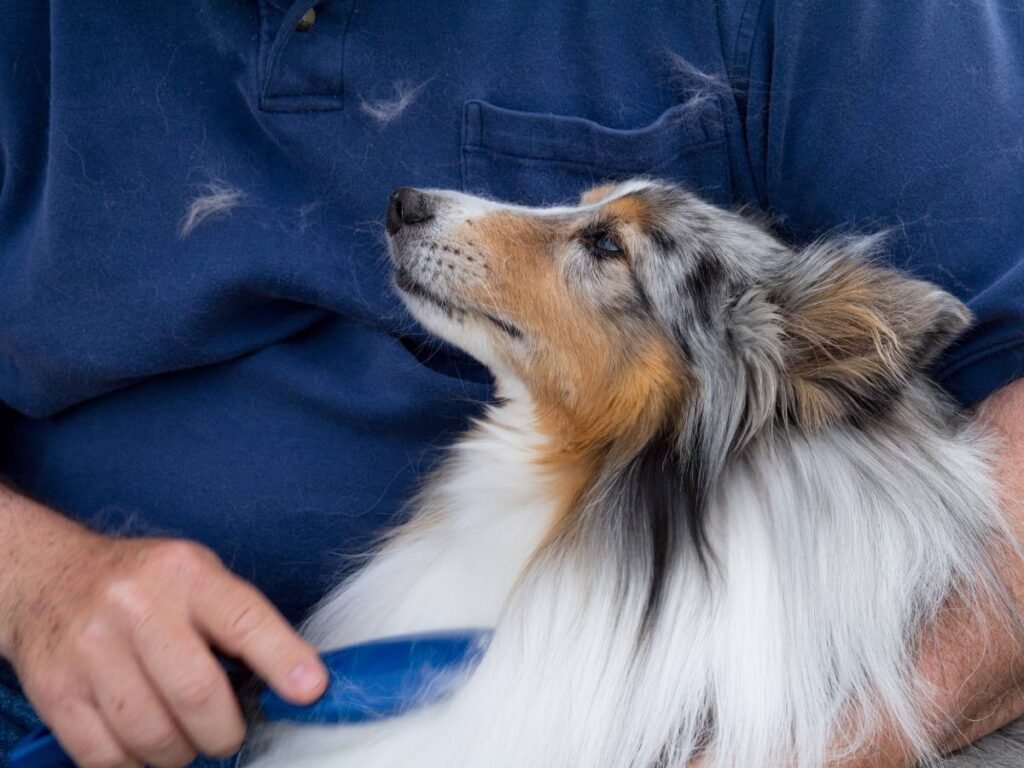
Hypoallergenic Dog Food: Signs Your Dog Might Need It
Dogs, just like people, can develop sensitivities or allergies to certain foods. Some dogs have a sensitive stomach, which can make them more prone to dietary sensitivities and digestive issues. While occasional digestive upset or skin irritation may not always mean a food allergy, recurring issues often signal that your pet’s current diet may not be the right fit.
This is where hypoallergenic dog food becomes important. Designed with carefully selected ingredients, these diets reduce the risk of allergic reactions and help improve your dog’s overall wellbeing. Pet parents should consider hypoallergenic pet food when their dogs experience ongoing symptoms related to allergies or a sensitive stomach.
What is Hypoallergenic Pet Food?
Hypoallergenic pet food is formulated to avoid common allergens that can trigger adverse reactions in dogs. Instead of multiple protein or grain sources, it typically includes limited, novel, or hydrolyzed ingredients to minimize the risk of immune system flare-ups. By simplifying the recipe, the food makes it easier to identify and eliminate triggers while still providing complete, balanced nutrition.
Examples include foods made with lamb and rice or recipes that avoid common irritants like wheat, soy, or dairy. At First Vet, options like Hypoallergenic Adult Dog by Josera and Lamb & Rice by Josera are tailored to support dogs with sensitive systems.
Common Signs Your Dog Might Need Hypoallergenic Food
1. Persistent Itching and Skin Irritation
Constant scratching, licking, or biting of the skin is one of the most common signs of food allergies. Unlike seasonal allergies triggered by pollen or dust, food-related itching tends to last year-round. You might notice your dog rubbing their face on furniture, chewing their paws, or scratching behind the ears. Over time, this can cause hair loss, hot spots, or even open wounds. If you’ve ruled out fleas and parasites, diet is the next thing to investigate.
Hypoallergenic diets often include nutrients like vitamin E, sunflower oil, and amino acids to support healthy skin and strengthen the skin barrier. These nutrients also help with dry skin and promote coat health. Vitamins, including vitamin E, are essential for maintaining healthy skin in dogs with allergies.

Switching to a limited-ingredient option such as Hypoallergenic Adult Dog by Josera can help reduce the reaction by eliminating common allergens like wheat, soy, or chicken by-products.
2. Chronic Digestive Upsets
Occasional stomach upset can happen to any dog, but persistent symptoms such as vomiting, diarrhea, excessive gas, loose stools, digestive problems, or gastrointestinal issues may suggest a food sensitivity. In many cases, the dog’s digestive system struggles to process a particular protein or grain. Over time, this can lead to nutrient deficiencies and weight loss.

Hypoallergenic diets are designed with highly digestible proteins and gentle carbohydrates, such as those found in Lamb & Rice by Josera or sweet potato, making them easier on the stomach while still providing complete nutrition. Some hypoallergenic diets are specifically formulated for dogs with sensitive stomachs.
3. Repeated Ear Infections
If you find yourself visiting the vet frequently for your dog’s recurring ear infections, food allergies could be the hidden cause. Allergic reactions can trigger inflammation in the ear canal, creating an environment where yeast and bacteria thrive. Signs include head shaking, foul odor, and excessive wax buildup. A diet switch to hypoallergenic food often reduces this inflammation, breaking the cycle of recurring infections.
4. Excessive Paw Licking and Chewing
When dogs are dealing with allergies, their immune response often shows up in their paws. If your dog constantly licks, chews, or nibbles at their paws, you may notice redness, swelling, or fur discoloration from saliva. This behavior is not just a habit—it’s often an attempt to soothe irritation caused by food sensitivities. Transitioning to a diet free of common allergens can significantly reduce this symptom over time.
5. Poor Coat Condition and Excessive Shedding
A healthy coat is one of the first indicators of a balanced diet. If your dog’s fur appears dull, brittle, or is shedding excessively despite proper grooming, food allergies may be interfering with nutrient absorption.

Omega fatty acids and high-quality protein found in hypoallergenic formulas restore shine, reduce dandruff, and support strong, resilient fur growth. Ingredients like fish oil and linseed oil are often included in these diets to further support coat and skin health, thanks to their high omega-3 fatty acid content.
6. Red or Inflamed Skin (Hot Spots)
Localized red, inflamed areas of skin, also known as “hot spots,” often develop when a dog scratches or licks excessively due to itchiness. Food allergies commonly trigger this cycle. If these hot spots reappear after treatment, consider evaluating your dog’s diet for allergens.
7. Frequent Gastrointestinal Discomfort Without Other Causes
Sometimes the signs are subtle: your dog may appear bloated after meals, show reluctance to eat, or pass frequent, foul-smelling stools.
Many dogs experience these symptoms as a result of an adverse reaction or allergic reaction to certain foods. If these issues persist and parasites or infections are ruled out, food intolerance is a likely explanation. Specialized diets can help dogs suffering from these ongoing issues.
Why Hypoallergenic Food Works
The science behind hypoallergenic diets lies in their carefully chosen ingredients:
- Novel Proteins: Proteins like lamb or hydrolyzed sources are less likely to trigger allergies compared to beef or chicken.
- Digestible Carbohydrates: Ingredients like rice are gentle on the stomach and reduce digestive stress.
- No Common Allergens: These formulas exclude ingredients such as wheat, soy, corn, or dairy, which are frequent culprits in food sensitivities.
By feeding your dog a hypoallergenic diet, you give their immune system a chance to reset and reduce overreactions to food.
Why This Matters for Dog Owners in Qatar
In Qatar’s climate, where dogs already face stress from heat and environmental allergens, food-related sensitivities can easily go unnoticed. Things dogs are allergic to can vary widely, and some dogs are more prone to allergies than others.
Persistent scratching or digestive issues may be attributed to the environment, but a dog’s diet often plays a significant role. That’s why considering each dog’s unique needs and selecting high-quality options such as Hypoallergenic Adult Dog by Josera or Lamb & Rice by Josera is important in ensuring your pet receives balanced nutrition without common irritants, especially for dogs allergic to certain ingredients.
Conclusion
Food allergies and sensitivities can be frustrating for both dogs and their owners. From itchy skin to digestive discomfort, the signs are often overlooked or misattributed. Hypoallergenic pet food offers a practical solution, providing balanced nutrition while eliminating common triggers. By making the switch, you may see improvements in your dog’s skin, digestion, energy levels, and overall quality of life.
If you suspect your dog is struggling with food sensitivities, consider trying specialized diets like Hypoallergenic Adult Dog by Josera or Lamb & Rice by Josera. Your pet deserves comfort and health, starting with the right food.
FAQ
1. How do I know if my dog has a food allergy or intolerance?
Allergy symptoms in dogs can include skin issues, digestive problems like diarrhea or gas, and recurring ear infections. Food allergies often cause these symptoms, while intolerances usually result in digestive upsets.
2. Can I diagnose food allergies at home?
Not directly. The best method is an elimination diet, where potential allergens are removed and then reintroduced under veterinary guidance.
3. How long does it take to see results on hypoallergenic food?
It can take 6–8 weeks for noticeable improvements in skin, digestion, and immune health after switching diets.
4. Are hypoallergenic foods suitable for all dogs?
Yes, they are safe for healthy dogs too, but hypoallergenic dog food is specifically designed for dogs with allergies or sensitivities. Some hypoallergenic foods are formulated specifically for adult dogs, so check the label for age suitability.
5. Should I give my dog treats if they’re on a hypoallergenic diet?
Only if the treats are also hypoallergenic. Feeding standard treats could reintroduce allergens and undo progress.
6. Is lamb always considered hypoallergenic?
Not always, but lamb is often less reactive than beef or chicken. If your dog hasn’t been exposed to lamb often, it’s more likely to be tolerated.
7. Can puppies eat hypoallergenic food?
Yes, as long as the food is formulated for growth and approved for puppies. Always check the product label or ask your vet.
Disclaimer:
This article is for educational purposes only and does not replace veterinary advice. Always consult your vet before making dietary changes—especially in cases of allergies, digestive disorders, or chronic infections.


Add comment